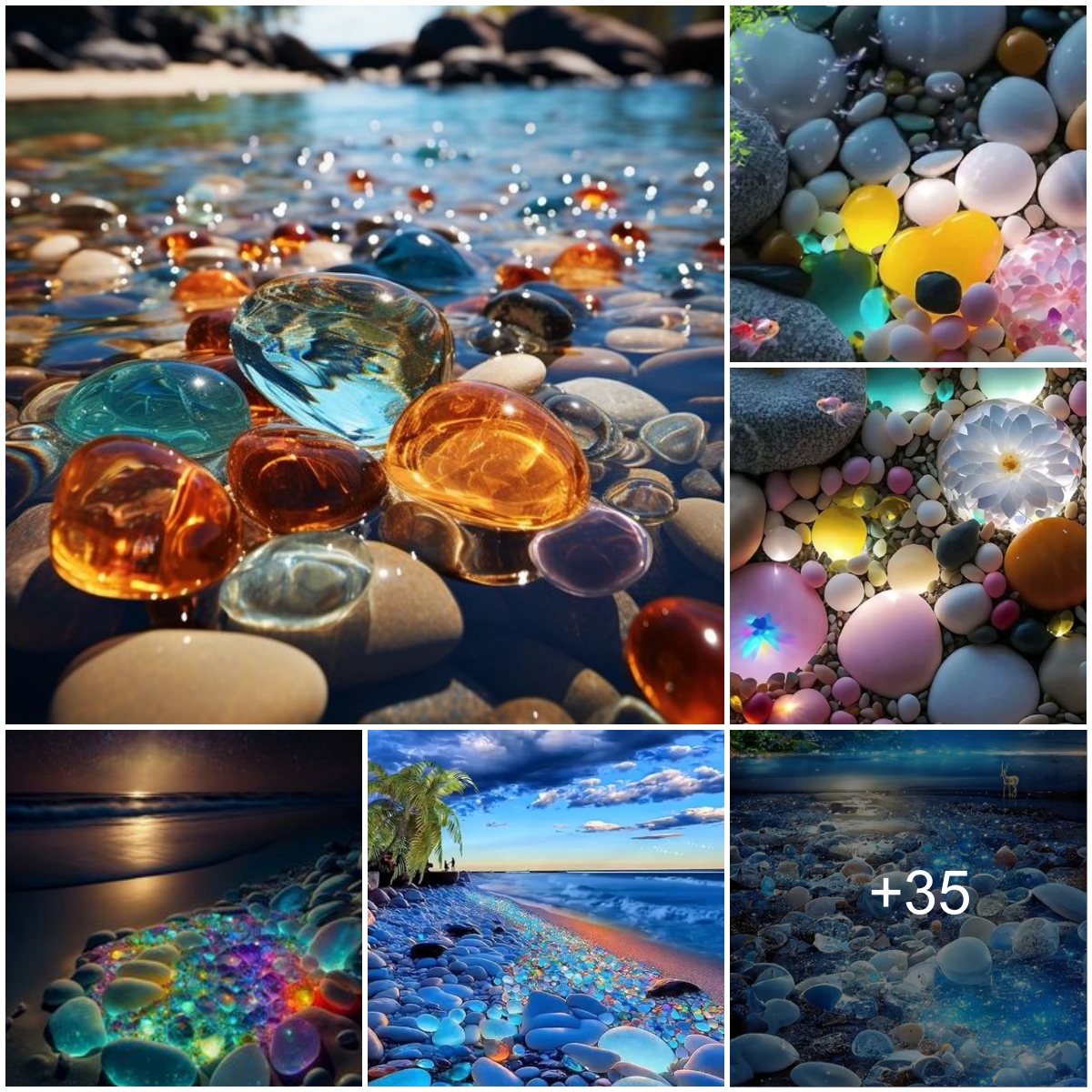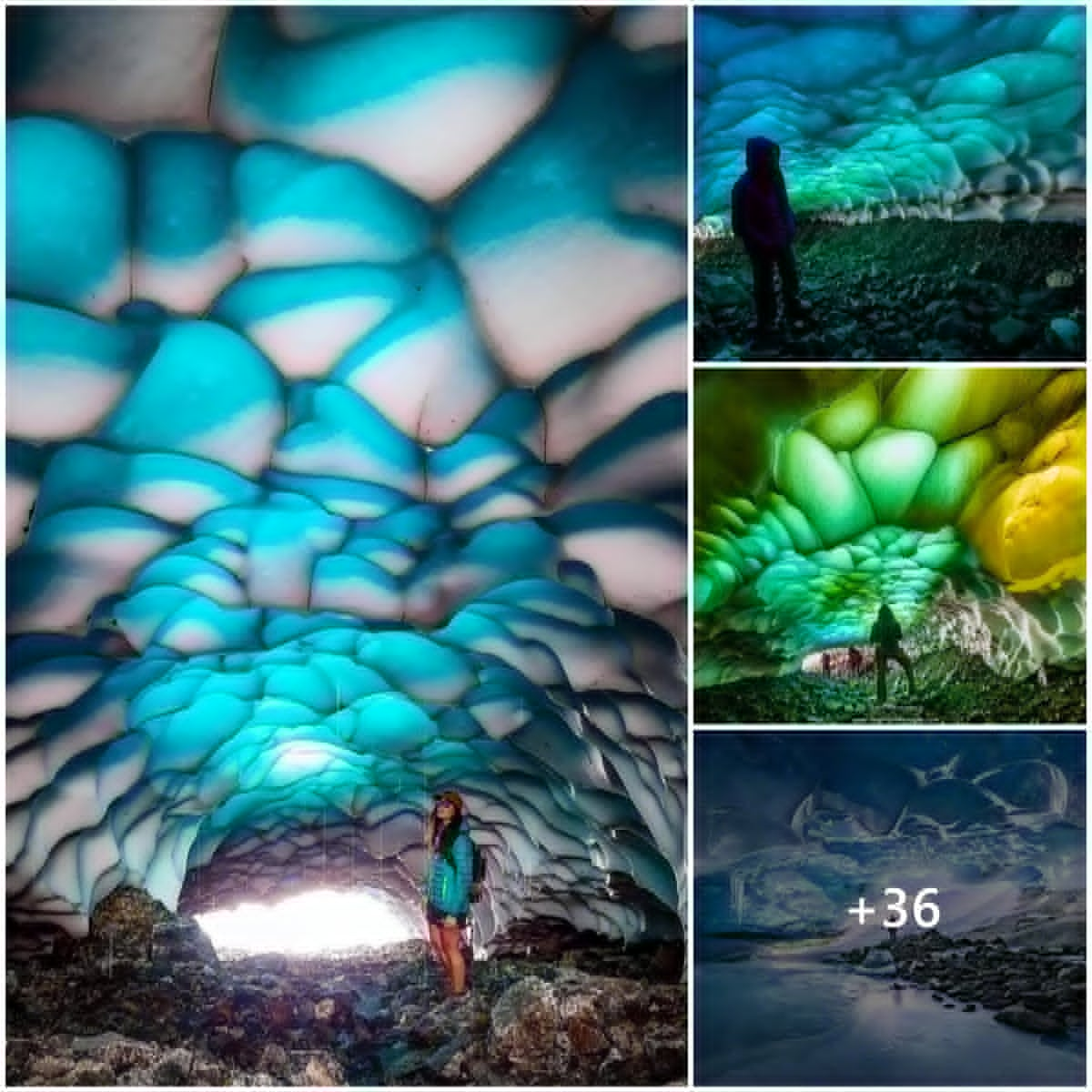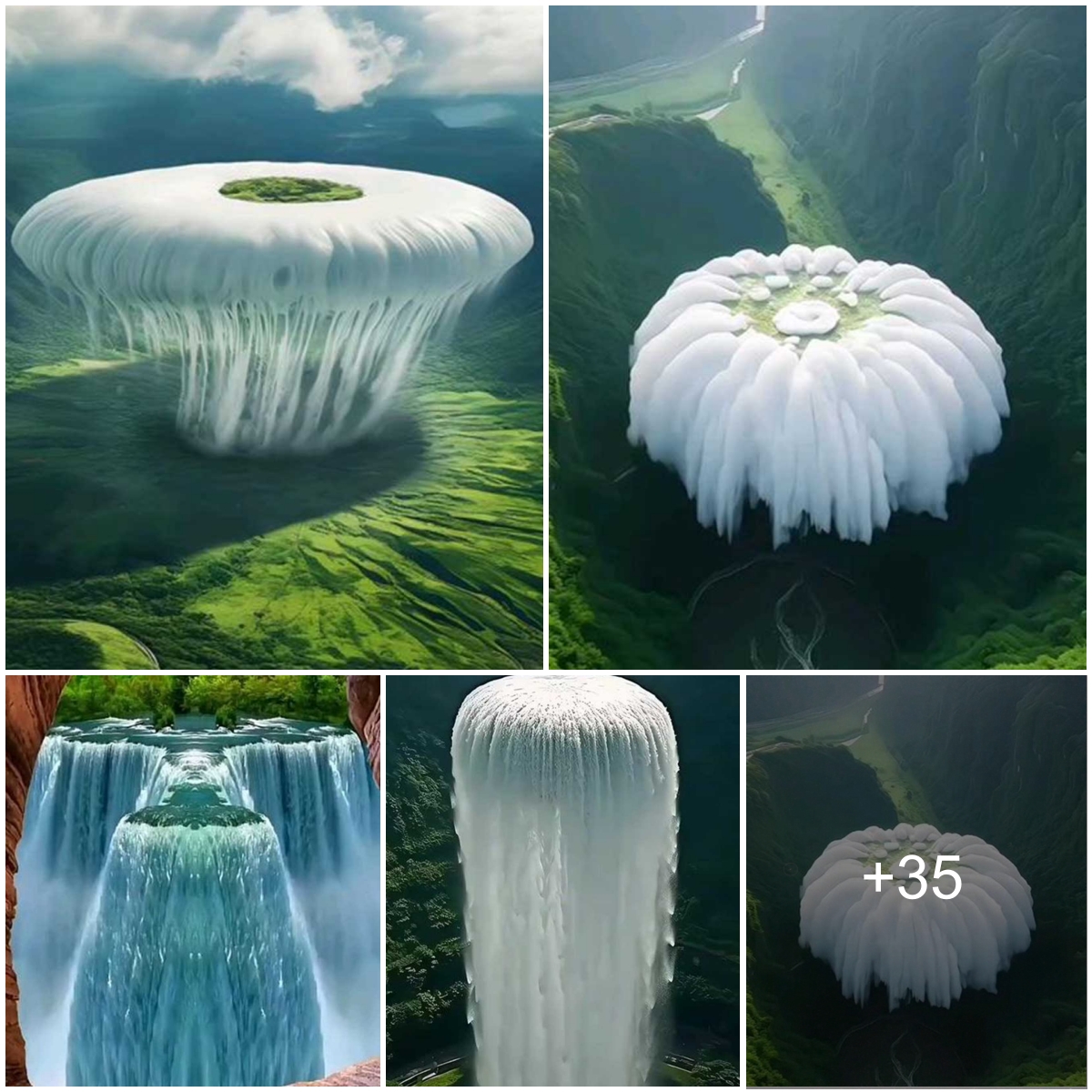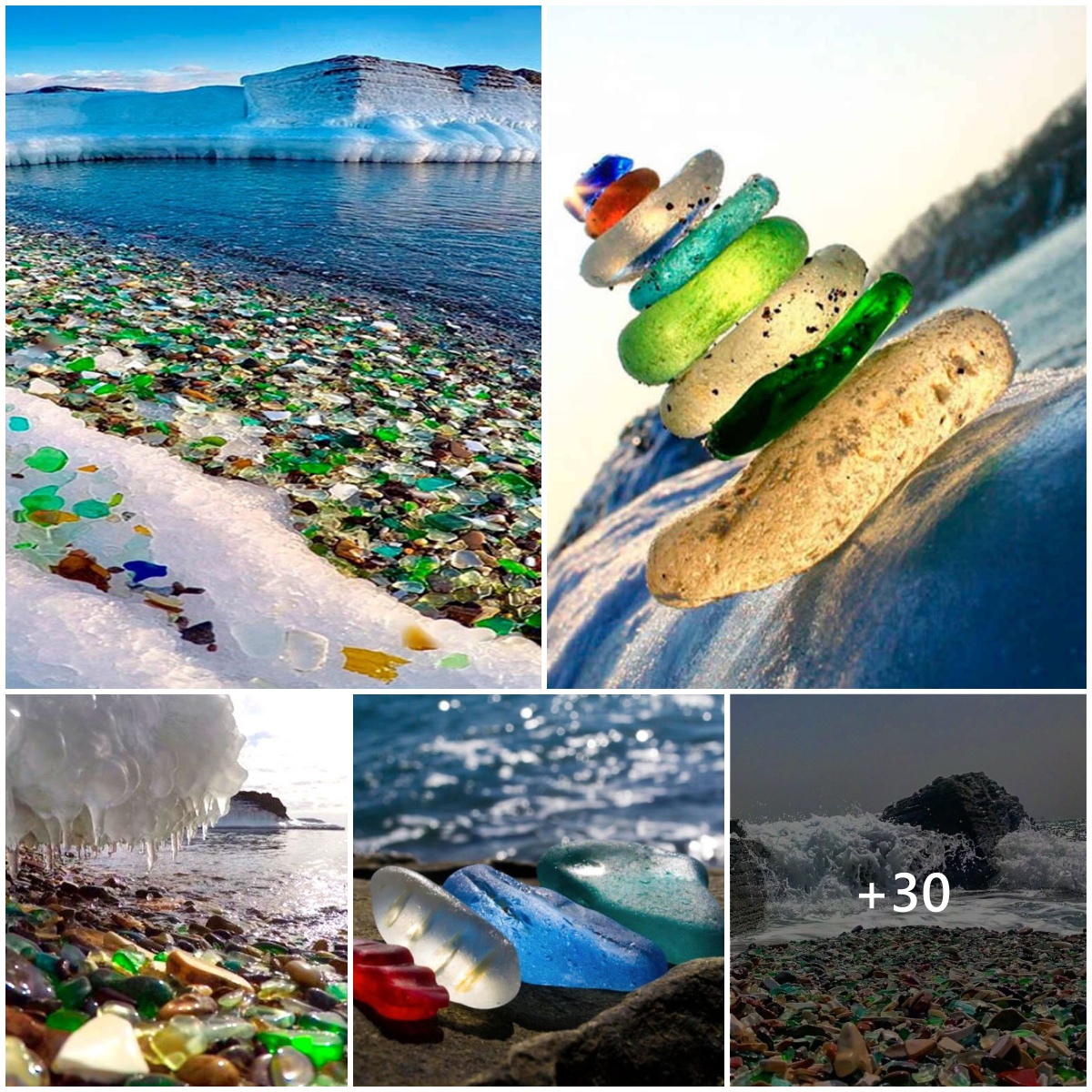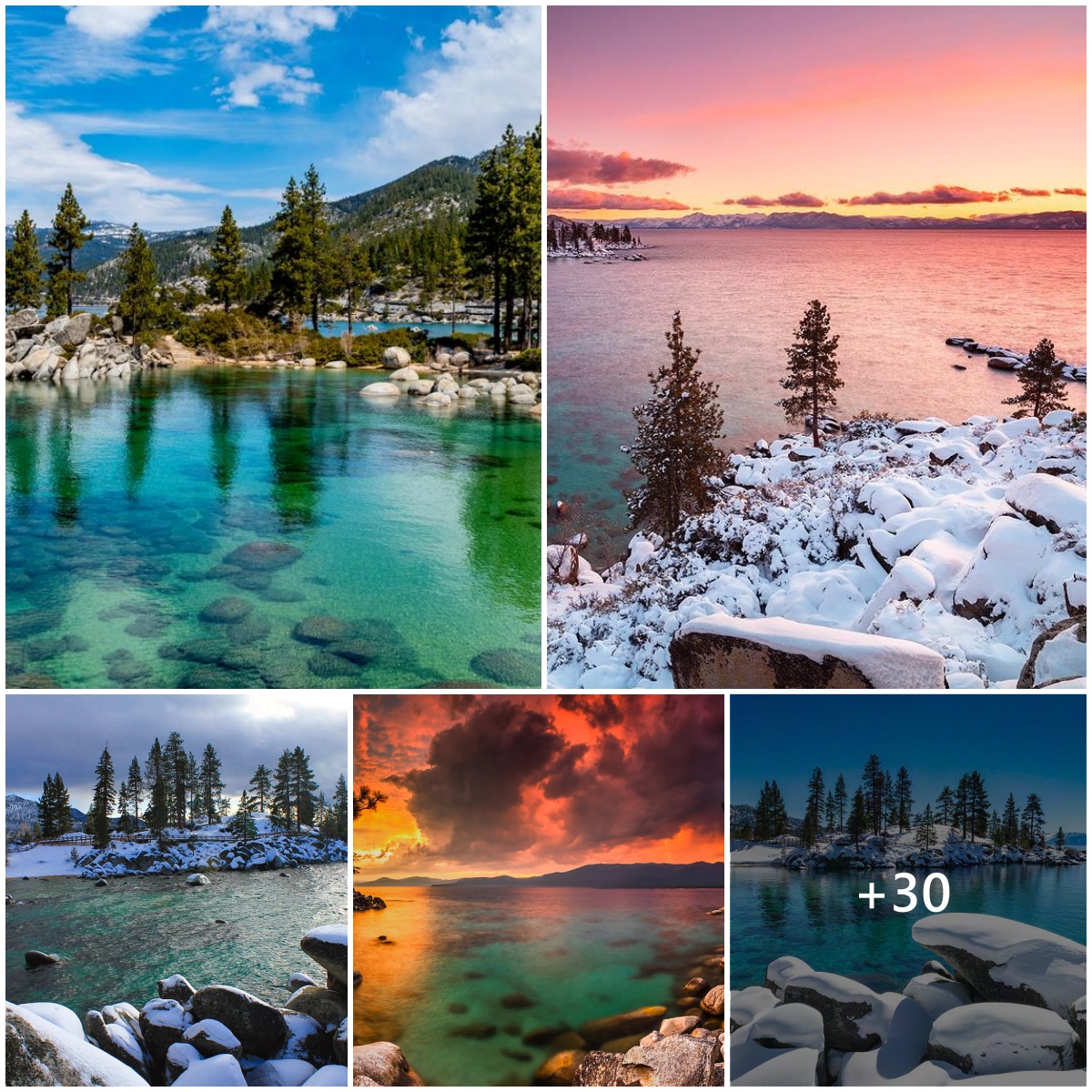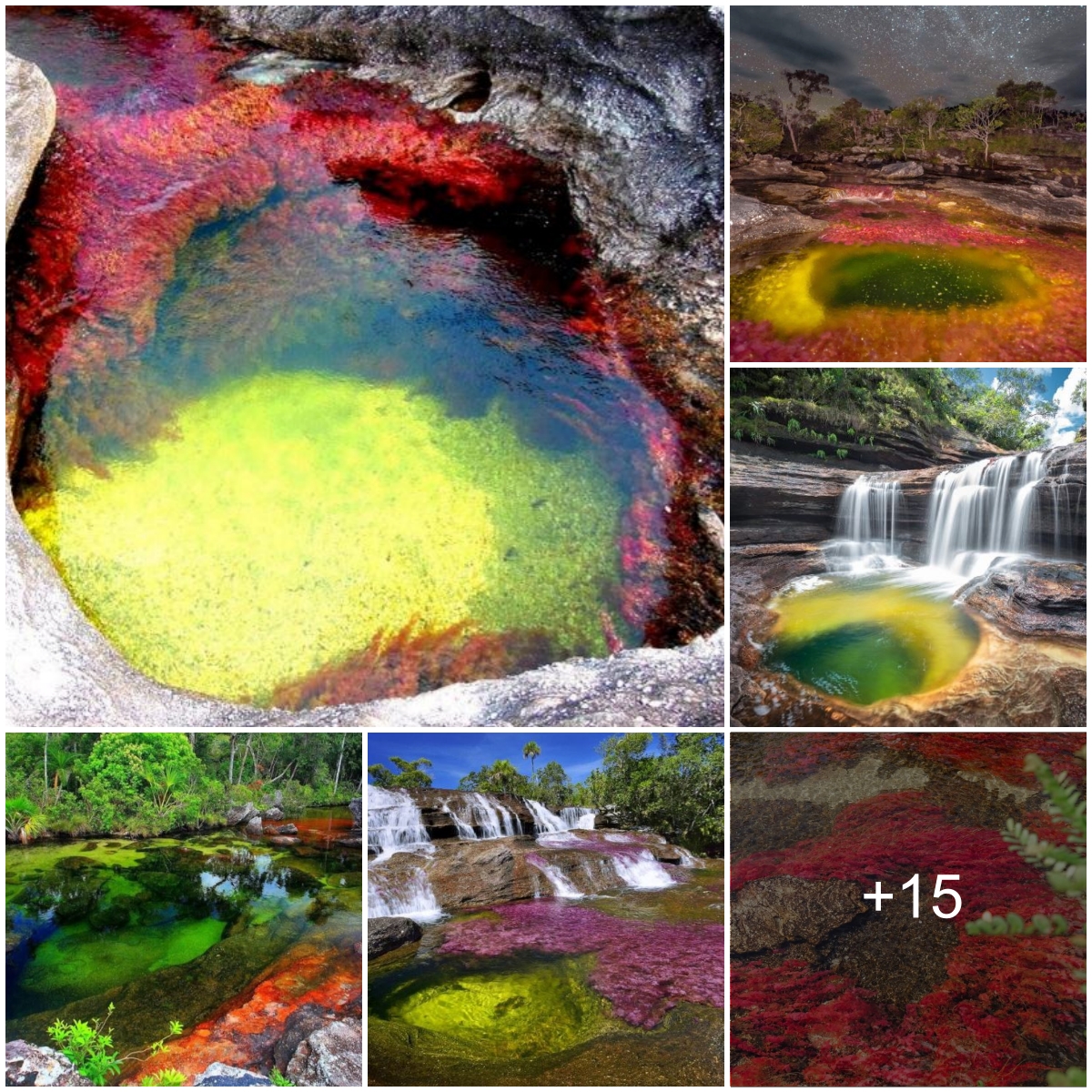Georgia’s development has earned the state recognition in multiple industries – film, art, and food, to name a few – but its natural features don’t receive enough accolades.
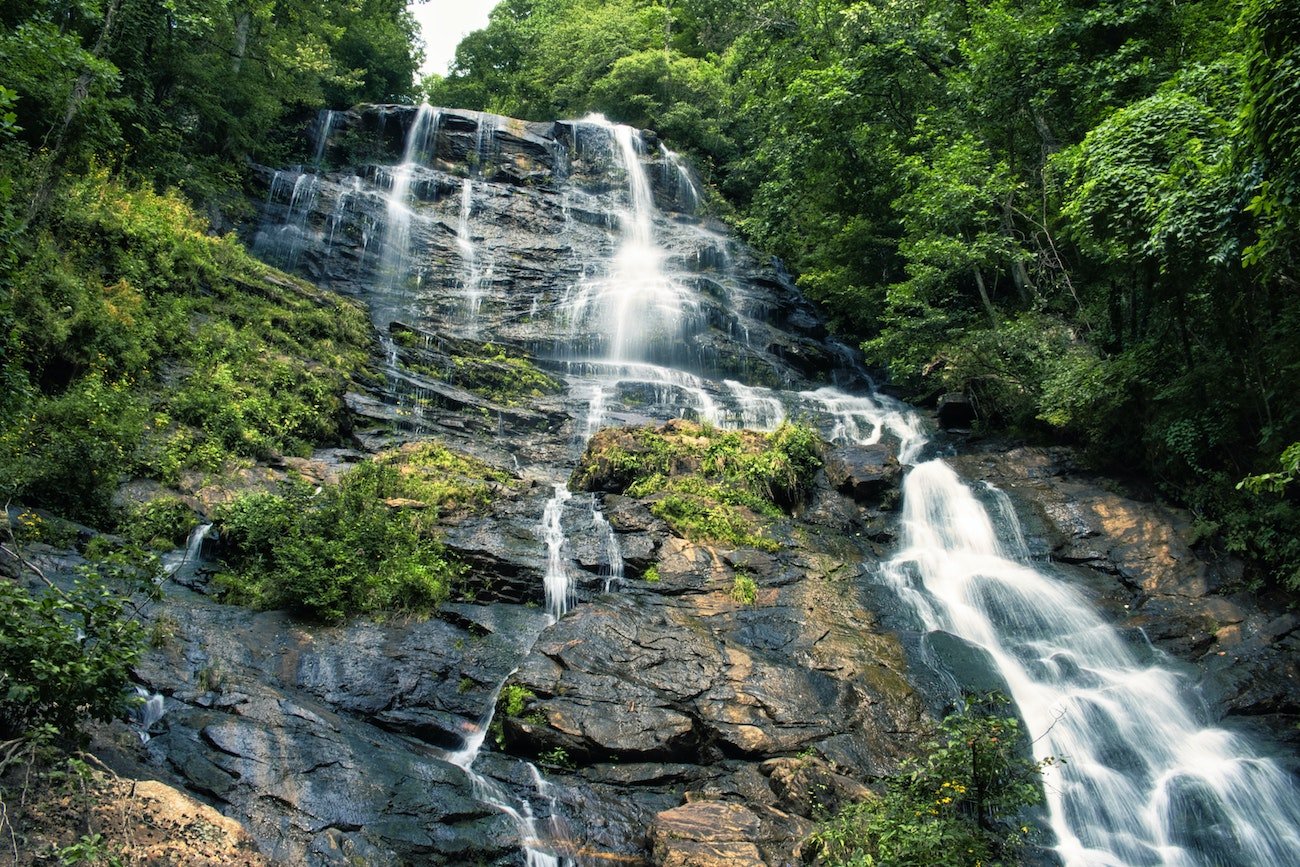
Nature has always been a subtle part of my childhood. While my neighborhood was still in development, my dad and I would make a game out of gathering the wild pea plants that grew out of construction sites. The stretches of cotton fields separating houses from the rest of the city always fascinated me when we drove past them. Even freightening thunderstorms gave me an excuse to curl up with my dog, who any other time, would prefer to be in the kitchen waiting for something to eat.
As an adult, I have more of an appreciation for the balance that has been struck between industrialization and the preservation of the natural world.
Georgia’s development has earned the state recognition in multiple industries – film, art, and food, to name a few –– but its natural features don’t receive enough acknowledgement. There are many places where nature has been preserved for us to enjoy if we take the time to seek them out.
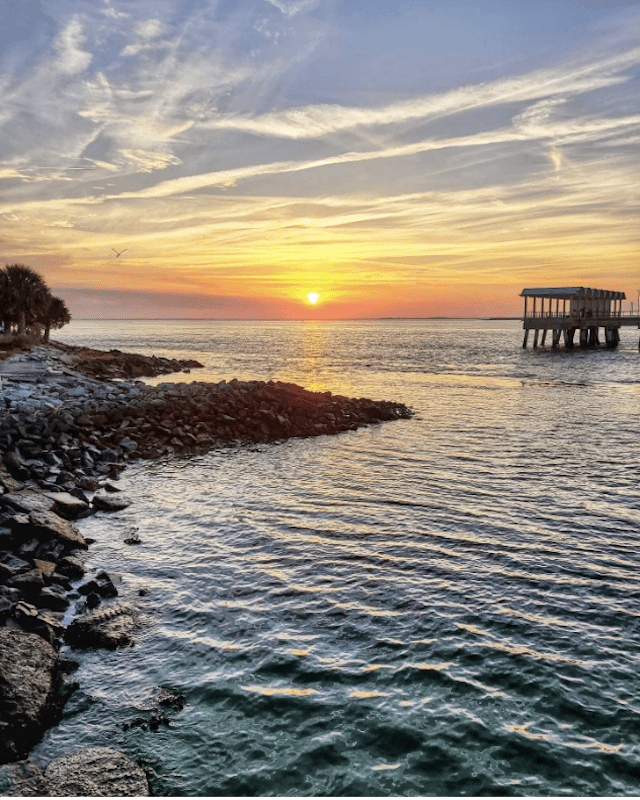
Once a vacation spot reserved for the wealthy, Jekyll Island is currently a sanctuary for coastal wildlife and forestry. The entire island is a protected state park, so there are plenty of foliage and animals to enjoy. A dolphin might even greet you!
The best way for visitors to see the island is to travel along the over 20 miles of photogenic trails. Popular exhibits to stop by while you’re on the island, include the Jekyll Island National Historic Landmark district, Georgia Sea Turtle Center, and Horton Pond.
Not only does the 2-mile-long Tallulah Gorge has great views, but visitors can experience the natural canyon in different ways. For those who are brave, you can obtain a permit to walk along the floor of a 1,000-foot-deep ditch. You can also look over the depths on the suspension bridge. It sways 80 feet above the rocky bottom, providing spectacular views of the river and waterfalls. There are also trails for visitors to bike or walk along.
Exhibits in the park’s Jane Hurt Yarn Interpretive Center highlight the rich history of this Victorian resort town, as well as the rugged terrain and fragile ecosystem of the area.
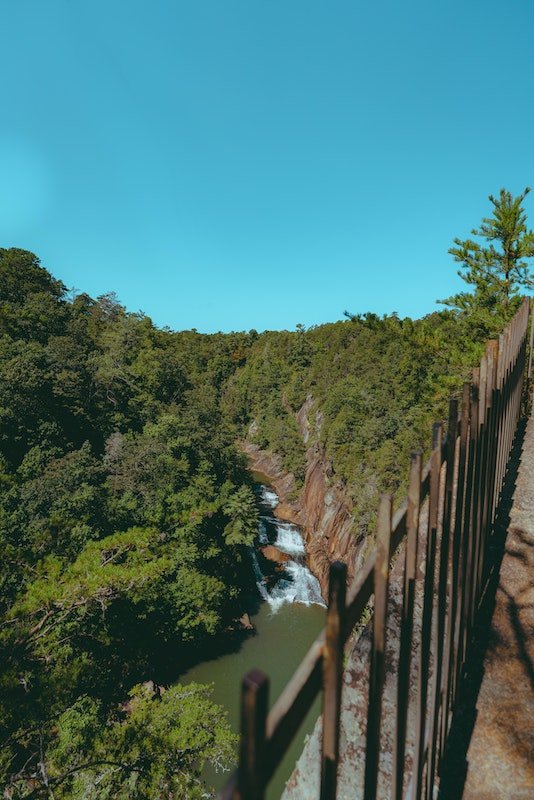
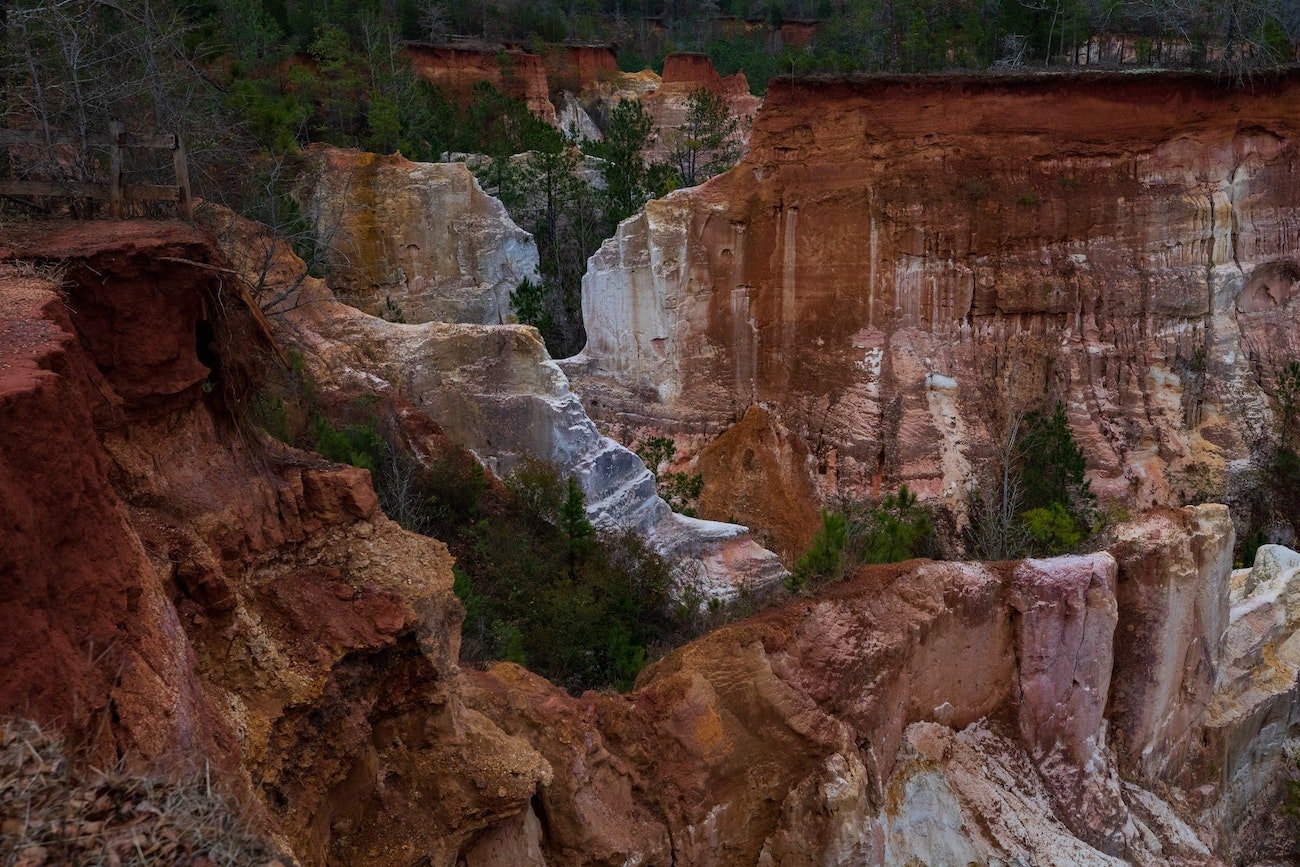
Formed due to poor farming habits at the hands of 19th-century farmers, Providence Canyon is one of Georgia’s natural wonders. Its 150-foot-deep gullies and gorgeous views likely earned its nickname: Georgia’s Little Grand Canyon, which isn’t as intimidating as others in the state, making it a great choice for beginner hikers. You can travel along the floor or the rim trail.
One aspect that visitors can look forward to is the rare Plumleaf Azalea. It blooms during late summer, when most azaleas have lost their color. The plant is rare enough that it grows only in this region.
The backcountry trail, which underscores portions of the winds and canyon through mixed forest also doubles as a campsite for backpackers.
Not only is Lake Blue Ridge a great place to relax and remain closer to nature, but photographers are sure to capture amazing shots of the 3,290-acre pond.
80% of Lake Blue Ridge’s shoreline is in the Chattahoochee National Forest. It has a short, easy hike along the shoreline, as well as a one-mile paved loop road popular for walking.
Kayak and paddle boards are available for rent, and there are campsites for those who want to stay overnight.
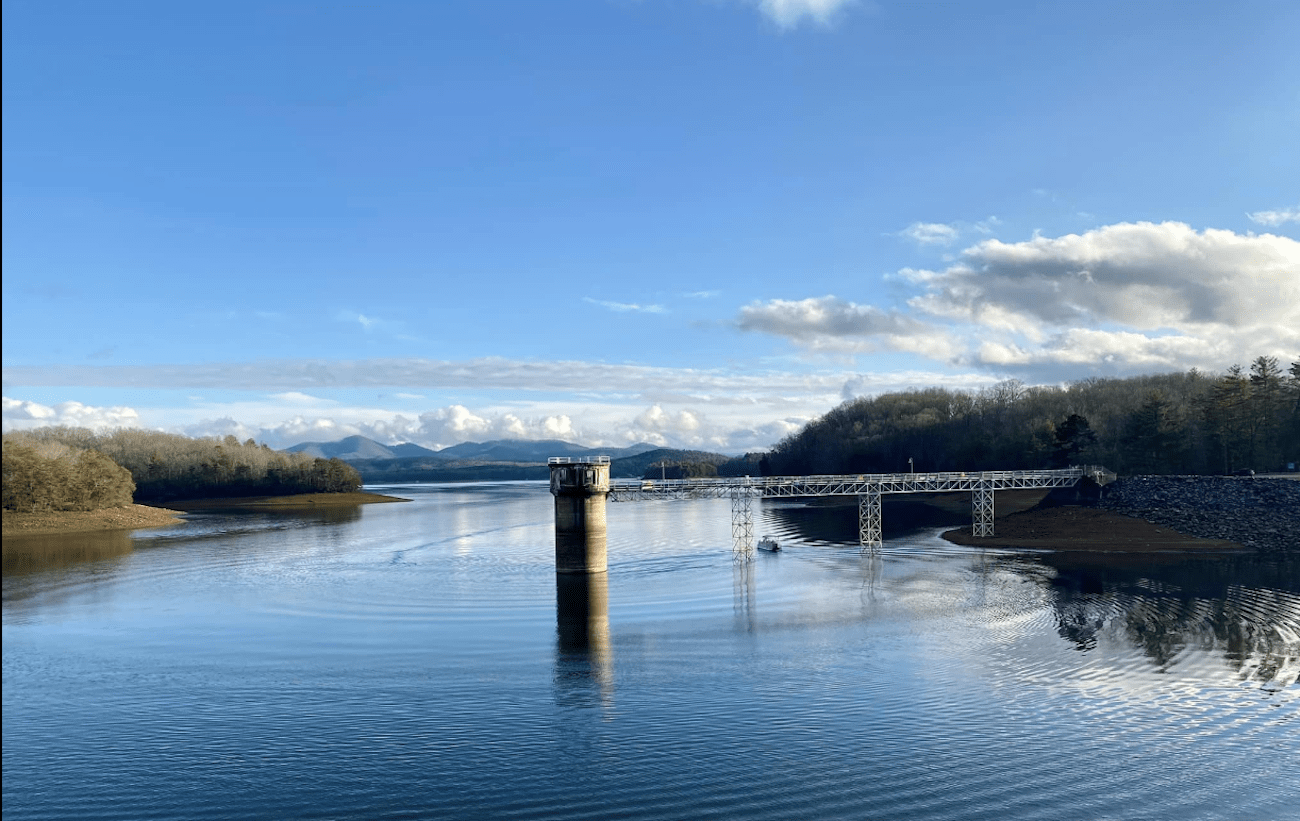
With 30 acres of breathtaking greenery, Atlanta Botanical Gardens can easily fill up your entire day between beautiful plants, art exhibitions, and available classes. For those who need help getting started, there is a garden guide on the official website to steer you toward activities that you would most likely enjoy.
In addition to the lovely flowers, you will also find permanent art pieces throughout the garden, like sculptures and water features. The Gardens display Holiday Lights throughout the park from November through January for those visiting during the winter holiday season.
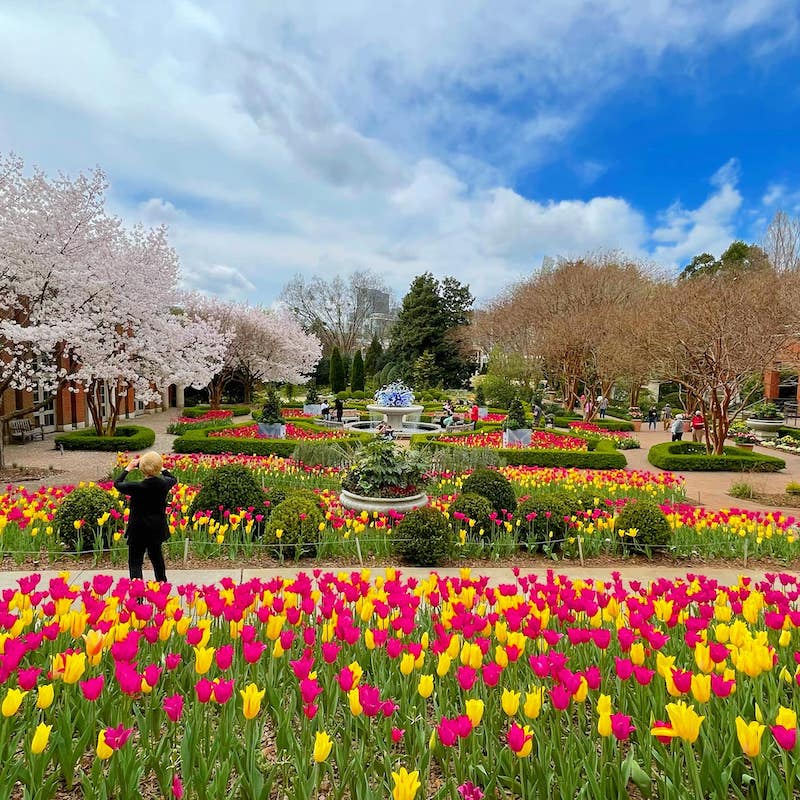
The Appalachian National Scenic Trail is a 2,180-mile-long path that traverses the eastern coastal states between Maine and Georgia. The vast majority of the trail is protected by right-of-ways or federal or state ownership of the land.
Hikers of all experience levels can use the trails, and visitors can hike as much or as little as they like. There are even groups of hikers championing the entire trail in one season.
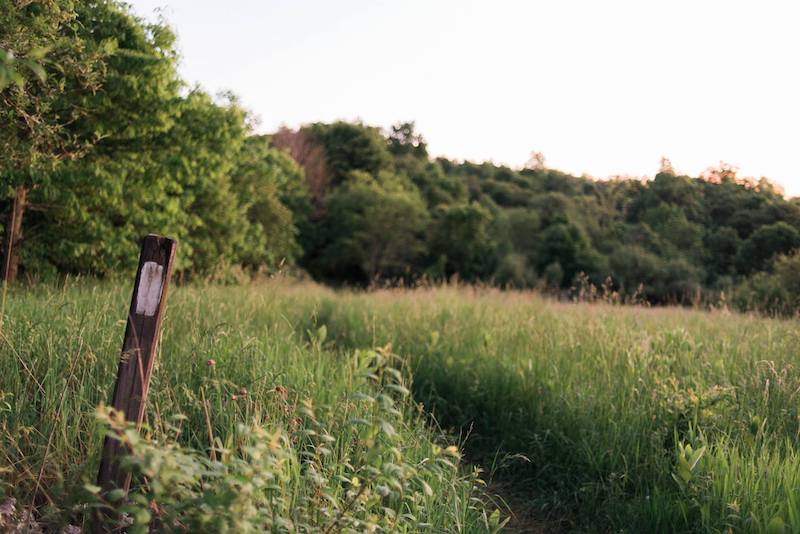
The name Amicalola comes from a Cherokee Indian word meaning “tumbling waters.” An appropriate designation for a 729-foot waterfall, the third-highest cascading waterfall east of the Mississippi River.
Travelers can visit the falls through Amicalola Falls State Park where there are lodging for overnight stays and hosts other events, such as 3D archery, ziplining, and GPS scavenger hunts.
There are more than a handful of hiking paths. For the adventurous, the eight-mile Approach Trail leads from the park to Springer Mountain, the southern terminus of the 2,193-mile Appalachian Trail.
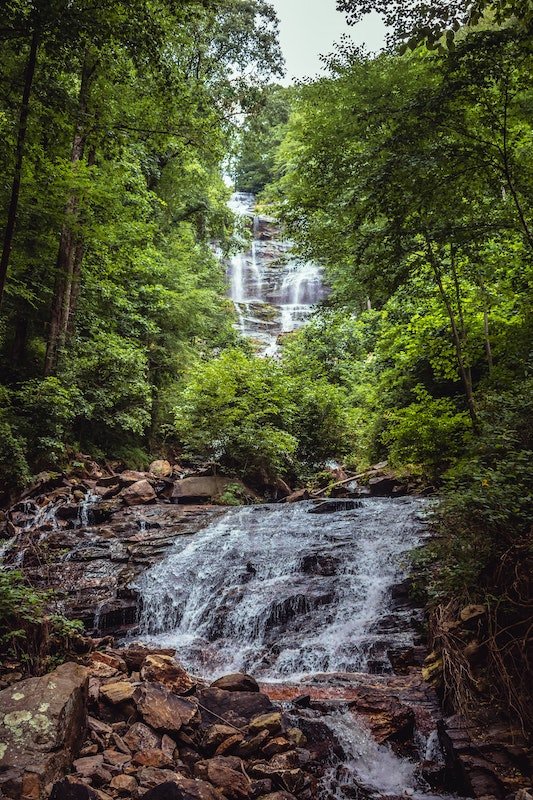
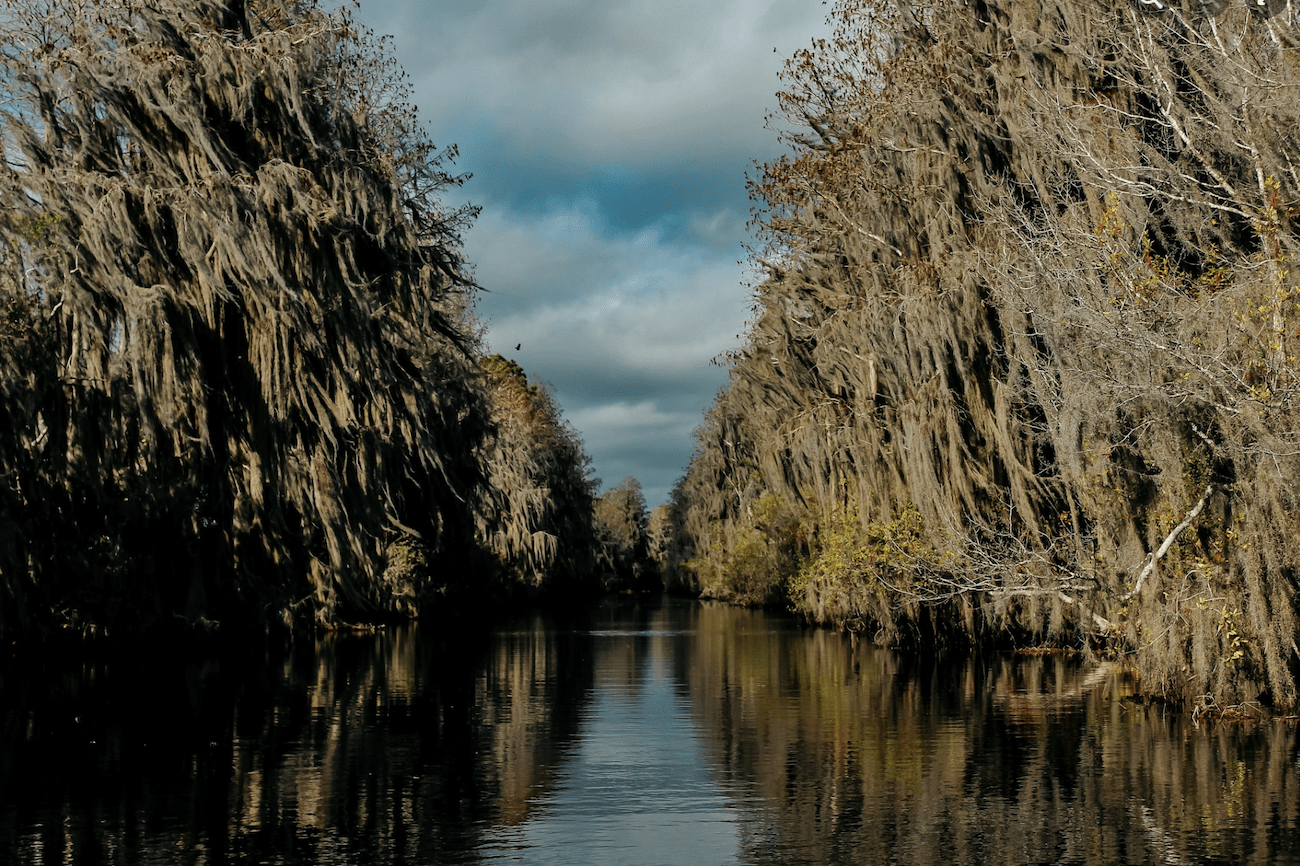
Not only is the Okefenokee Swamp one of the largest freshwater ecosystems in the world, but it is also a sanctuary for native and endangered species of South Georgia. The wetlands have an impressive amount of biodiversity. The 21 different habitats house or aid in the survival of over 850 plants, 200 birds, and 64 reptile species, making this a great place for photographers!
There are three access points to the swamp: Okefenokee Swamp Park, Stephen C. Foster State Park, Okefenokee Swamp Park, and Okefenokee National Wildlife Refuge. Visitors can experience through boat tours that travel along preserved waterways and wilderness walkways.
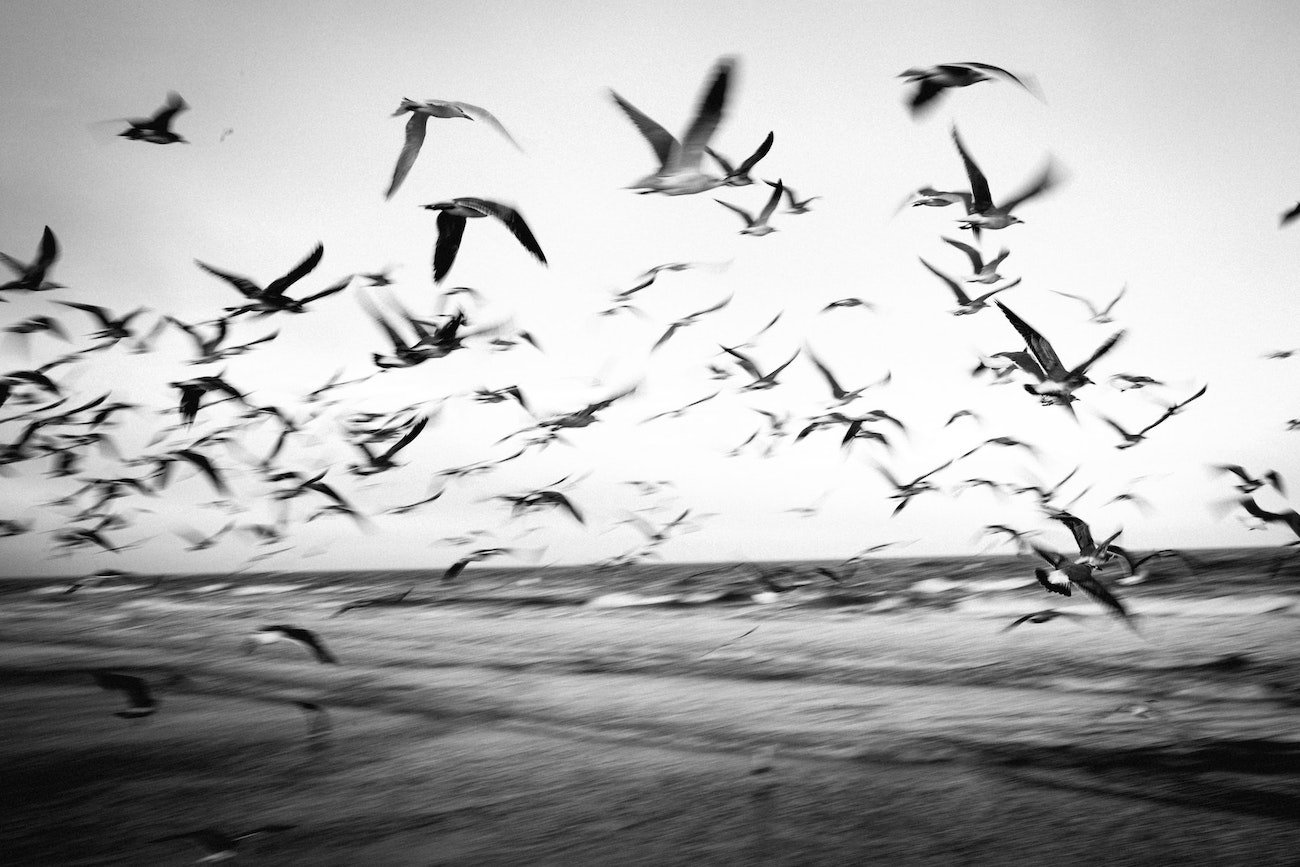
Cumberland Island is a shining example of the geographic diversity that can be found in Georgia and the United States. From populated marshes to sandy beaches, nature enthusiasts will be able to enjoy a variety of ecosystems due to the island’s lack of commercial development. There are also plenty of activities visitors can enjoy, including star gazing, camping, guided tours, and hiking.
Since so much of the natural habitat has been undisturbed, lodging is sparse compared to some of the other barrier islands, so planning is essential for those who want to visit.
This island is only accessible by ferry, so you will have to make arrangements in order to travel to the island.
The rolling hills and tepid waters of Warm Springs rose in popularity after then-President Franklin D Roosevelt soaked in the springs to treat his polio. Today, the Little White House, or FDR’s temporary home, is part of the historical exhibits created to chronicle FDR’s life in Georgia, detailing the history of the Victorian-era town and letting visitors feel the famous and natural warm springs.
Many pools have been drained for preservation, but the Historic Pools Museum allows visitors to feel and drink the water of some of the untouched basins.
